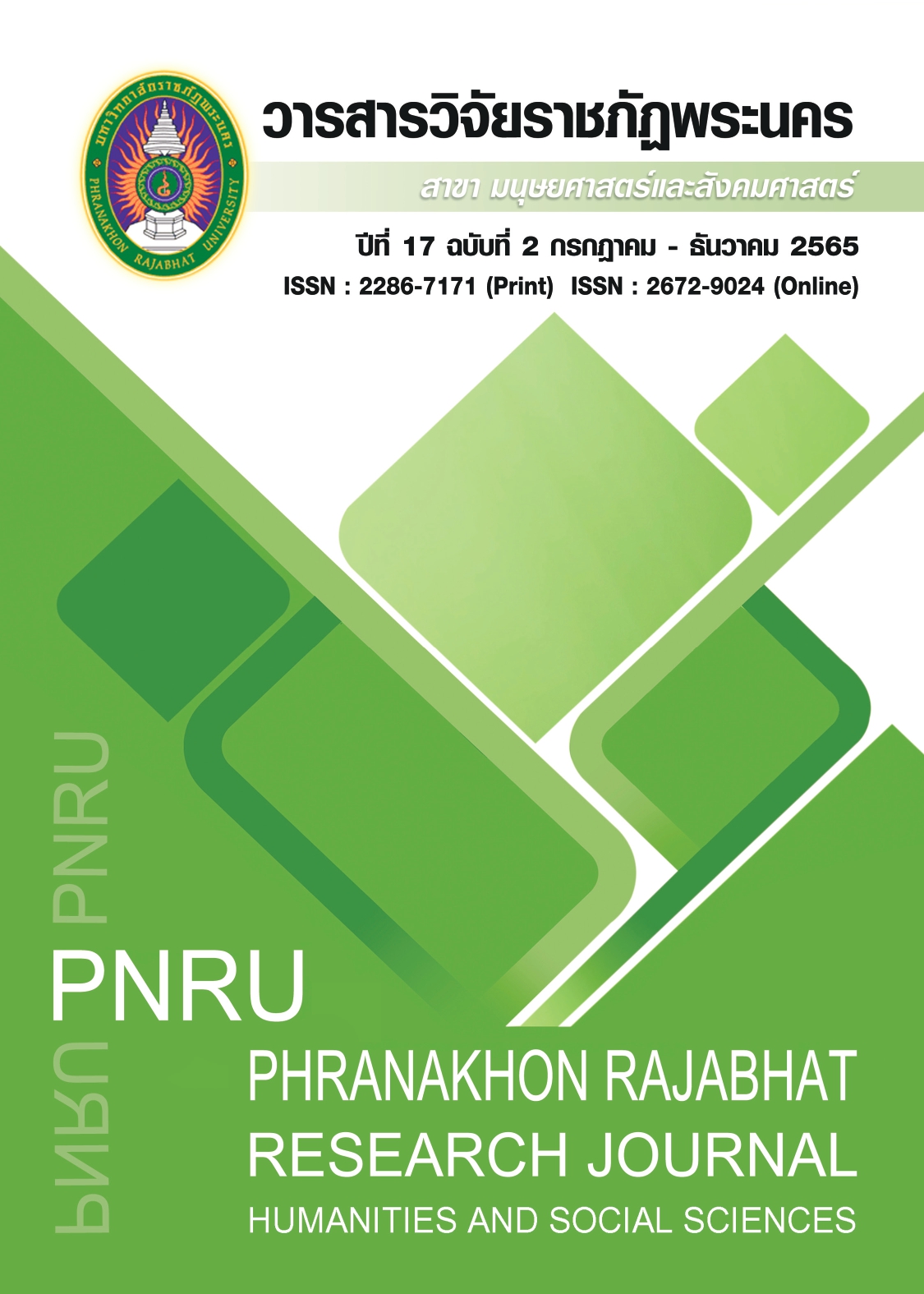A STUDY OF RELATIONSHIP BET WEEM HAPPY MONEY WITH SAVING PATTERNS OF EMPLOYEE FOR PRE-RETIREMENT
Main Article Content
Abstract
The objectives of this research were: 1) to study the financial health of employees before retirement age; 2) to study the relationship between financial health and saving patterns of employees before retirement age; 3) to study the savings patterns of employees before retirement age. The quantitative research was a sample of 269 people. The instrument used in this research was a questionnaire. The statistics used for the analysis were frequency, percentage, multiple classification analysis (MCA), and multiple regression analysis (MRA). The qualitative research consisted of a sample of 15 people. The research instrument was the structured interview. The results showed that the overall financial health of pre-retirement employees was at a high level (x =3.49, S.D =.738). The direction of the relationship between personal factors can be explained by the standard adjusted regression correlation coefficient (beta), which found that the standard regression coefficient of variables for gender, age, education level, status, number of members, monthly income, job position, and the duration of work in this organization is positive (.009, .321, .325, .331, .549, .701, .491, .749), which can be predicted by 63 percent.
Article Details

This work is licensed under a Creative Commons Attribution-NonCommercial-NoDerivatives 4.0 International License.
Each publish articles were copyright by Phranakorn Rajabhat University
Any contents which appeared in each articles in the journal were authors personal opinion. It did not relate to Phranakorn Rajabhat University and other instructors in the university. Each authors would take responsibility on their articles. If there are any mistake, the authors will take responsibility themselves
References
Chaiyapat, C. (2020). Personal Finance Sustainability and Savings and Investment Behaviors for Aging Retirement (Thesis). Bangkok: Srinakharinwirot University.
Cheeking, T. (2020). Factors Affecting Financial Discipline Behavior of HQ officials. Royal Thai Armed Forces. Journal of Modern Management, 18(1).
Cronbach, L. J. (1970). Essentials of Psychological Test. (5th ed.). New York:Harper Collins.
Dessart, A.M. & Kuylen, A.A. (1986). The nature, extent, cause and consequence of problematic debt situations. Journal of Consumer Policy, 9(3), 311–334.
Jutakanon, p. (2020). Developing guidelines for financial planning after retirement of private.
employees in the district. Economic areas in the eastern region of Thailand. Journal of Social Sciences and Anthropology Buddha, 5(5), 276–287.
Perry, V. G., & Morris, M. D. (2005). Who Is in control? The role of self–perception, knowledge, and income in explaining consumer financial behavior. Journal of consumer affairs, 39(2), 299–313.
Robb & Woodyard (2011) Traditional Midwives as Family Planning Communication in Asia. Honolulu: The East West Communication Institute.
Shim, S., Xiao, J. J., Barber, B. L., & Lyons, A. (2009). Pathways to life success: A conceptual model of financial well–being for young adults. Journal of Applied Developmental Psychology, 30(6), 708–723.
Sirinukulwatana, S. (2021). Guidelines for managing personal money for effective retirement planning. The efficiency of Rajabhat University employees. Journal of Management Science, 8(1), 216–229.
Teerakitikorn, T. & Wenthong, S. (2020). Savings guidelines for preparing for retirement. work of the population in the central region.Journal of Industrial Business Administration, 2(2), 42–55.
Samakkhetrakarn, W. & Srising, P. (2020). Factors affecting the financial planning model for Stable in retirement: a case study of UOB customers Sriwara Road Branch. Art journal Manage, 4(3), 567–580.
Zakaria, R.H., Jaafar, N.I.M., & Marican, S. (2012). Financial Behavior and Financial Position: A Structural Equation Modeling Approach. Middle–East Journal of Scientific Research, 12(10), 1396–1402.


